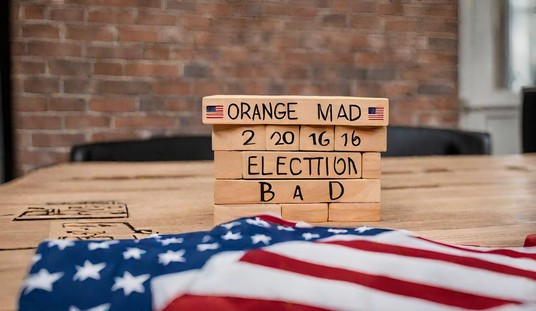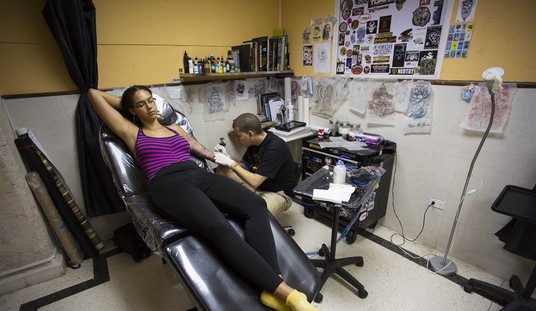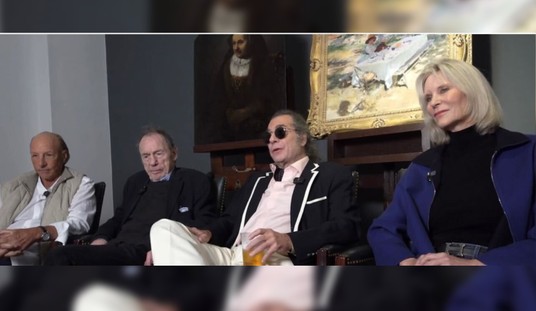This June 22, Pixar will release Brave, the studio’s 13th animated feature. Brave tells the story of Merida, a Scottish princess who rebels against her royal parents with dire consequences. Even though it may be a bit darker than a typical Pixar production, Brave looks to have the stunning visuals and memorable characterizations that make Pixar films so great.
Over the last 26 years Pixar has transformed animation. Partnering with Disney the studio innovated the medium in a way unseen since the days of Walt Disney himself. Many people still thought of computer animation as some sort of sci-fi pipe dream in 1986, but thanks to Pixar, the medium has become the industry standard — and the company’s films now dominate both the box office and critics’ yearly top 10 lists.
Pixar’s dozen productions have met with varying degrees of critical and box office success. I’d say there’s no such thing as a bad Pixar film, but some movies have raised the bar exponentially while others have fallen a bit short of the high standards the studio has set. I’ve compiled a list of the twelve movies ranked from the least to the greatest. Here we go…

12. Cars 2 (2011)
Cars 2 takes its characters out of charming Radiator Springs for an international adventure.
The resulting film winds up becoming a bright, loud mess trying too hard. Though Pixar chief John Lasseter denied that Disney forced him to make the movie, Cars 2 seems to have more in common with Michael Eisner’s “cheapquels” (the sequels rushed out to make quick money and sell merchandise) — though this film didn’t come cheap.
There’s so much wrong with Cars 2. Shifting the bulk of the action from Lightning McQueen (voiced by Owen Wilson) to Mater (voiced by Larry the Cable Guy) doesn’t work. Let’s face it: a little Mater goes a long way. The environmental message winds up being more annoying than insidious. And for all the candy-colored ADD action, the movie generates little genuine excitement.
Cars 2 became Pixar’s lowest-grossing film in North America since 1998, and critics had largely less-than-kind words. The fact that it was the first Pixar feature to fail to generate Oscar nods says a lot too.
11. Ratatouille (2007)
Ratatouille begins with two strikes for me. First, the setting in the world of French cuisine — not exactly the most obvious setting for a family movie night. And second, scurrying around an environment you’d want spotless? The main character is a rat.
Yes, that’s right: I have a problem with a rodent as the protagonist in a Disney film. Look, I’ll admit that Mickey and Minnie are cute, classic Disney characters — and it would be sacrilege to suggest anything otherwise. But I still don’t want to see them running around in a commercial kitchen.
I suppose Ratatouille isn’t a terrible film, but at the same time, it doesn’t exactly stay with me, either. Perhaps if it had been more memorable, it would rank higher on this list. On second thought: maybe not. Not with that disgusting rodent in the kitchen.
10. A Bug’s Life (1998)
Pixar’s second film came three years after the giddy success of Toy Story (the studio hadn’t yet gotten to the point where they could churn out a film a year or so). A Bug’s Life tells the story of, well, just what its title suggests.
A Bug’s Life finds its basis as a riff on Aesop’s fable of “The Ant & The Grasshopper,” with a unique twist — the grasshopper is a villain who demands food rather than begs. The movie boasted top-shelf voice talent such as Kevin Spacey, Julia Louis-Dreyfus, and Denis Leary, and, like Toy Story before it, the songwriting expertise of Randy Newman. Critics adored A Bug’s Life, and it managed to gross just a little more than Toy Story, though it had twice the budget.
Here’s the problem I have with A Bug’s Life: it just wasn’t that memorable. I can’t recall any key scenes or characterizations, which is especially odd since the film inspired an attraction at Disney’s Animal Kingdom. Usually Pixar productions have more staying power.
9. Cars (2006)
By 2006, Pixar’s technology had advanced to the point where the computers the studio used possessed a thousand times more speed than the machines the animators used on Toy Story. Pixar put this technology to use to create Cars, a high-octane tale of anthropomorphic vehicles.
Cars tells the story of Lightning McQueen, a hotshot rookie stock car who finds himself stranded in the small town of Radiator Springs. McQueen learns humility and respect for small town life during his stay there. It looks like Doc Hollywood, only with talking cars in place of people.
The movie winds up being colorful, cute, and often clever. Though Cars fell a little short of expectations for both critics and audiences, it turned into a financial success, especially in the realm of merchandising, shattering records with over $5 billion in revenues, the most for any Pixar production.
8. Monsters, Inc. (2001)
Pixar’s films turn out to be most charming when they explore the “what ifs” and “what abouts” of modern life. For its fourth outing, Pixar decided to explore the idea of the imagined monsters that scare children in Monsters, Inc.
In the city of Monstropolis, the only source of power is the screams of children. An expert team of scarers including Sully (voiced by John Goodman) and Mike (voiced by Billy Crystal) fill their requisite quotas of scream power. When Sully inadvertently brings a human child back to Monstropolis with him, chaos ensues, until the scarers discover that a child’s laughter is an even more potent power source.
Critics loved the film, which earned over half a billion in box office revenues; it also won Randy Newman a long overdue Oscar for Best Song. A prequel, Monsters University, is on the slate for a 2013 release. Monsters, Inc. entertains, even if it doesn’t break ground.
7. WALL-E (2008)
In 2008, Pixar went in a different direction with an ambitious project that is almost an art film. WALL-E goes deeper than “What do the toys do when they’re not being played with?” or “What if a fish got lost?” Director Andrew Stanton said the movie explores themes of free will versus programmed behavior:
I realized the point I was trying to push with these two programmed robots was the desire for them to try and figure out what the point of living was. … It took these really irrational acts of love to sort of discover them against how they were built. … I realized that that’s a perfect metaphor for real life. We all fall into our habits, our routines and our ruts, consciously or unconsciously to avoid living. To avoid having to do the messy part. To avoid having relationships with other people. of dealing with the person next to us.
WALL-E is a garbage-compacting robot left behind when Earth becomes too toxic for human life. He meets the sleek, horticultural robot EVE and they fall in love. Through their mutual fascination with a plant they end up saving the Earth and humanity.
WALL-E looks at large, existential themes and contains several scenes with no dialogue other than Ben Burtt-designed robot sound effects — not exactly the first things that come to mind when thinking of a fun animated film for the family. But WALL-E succeeded with both filmgoers and critics and even pushed the limits of what animation can do.
6. The Incredibles (2004)
After tackling the worlds of toys, monsters, and sea life, Pixar targeted the superhero genre with The Incredibles. Craig T. Nelson and Holly Hunter voice Bob and Helen Parr, two “supers” forced to lead normal lives after a ban on costumed vigilantes. The presence of a new villain draws them back into their old lives, but not before Bob visits Edna Mode, fashion designer to the heroes.
Writer/producer/director Brad Bird cleverly portrays the dichotomy between normal life and superhero life. The movie mined new territory for Pixar as the first production to feature a primarily human — make that superhuman — cast of characters.
The Incredibles became another critical and box-office smash for Pixar, and it earned the studio its second Oscar for Best Animated Film.
5. Finding Nemo (2003)
With Finding Nemo, Pixar went undersea. The film shares the tale of overprotective clown fish Marlin (Albert Brooks) as he searches for his lost son Nemo (Alexander Gould). Along the way, an array of ocean creatures help Marlin out, including a loopy regal tang named Dory (voiced by Ellen DeGeneres):
Finding Nemo‘s cleverness and humor lie in the movie’s characterizations of various aquatic life. The “circle of life” backdrop that the sea provides allows the filmmakers to create a wide palette of hilarious characters. You’ll find plenty of warmth and charm in Finding Nemo as well, and both children and adults can enjoy it on different levels.
Audiences and critics alike took to Finding Nemo like fish to water — the film was the highest grossing Pixar production until Toy Story 3. It even generated a spike in tourism to Australia, which that country used to its advantage. Finding Nemo also won Pixar its first Oscar for Best Animated Film.
4. Toy Story (1995)
Here’s the film that started it all for Pixar. A decade into the 21st century, we tend to forget that in 1995, computer animation was a novelty and that many people considered a feature film fully animated on a computer to be a fantasy. After all, Disney initially fired John Lasseter back in the ’80s for suggesting that the studio attempt a computer animated feature.
When Toy Story debuted, it was revolutionary. Critics and audiences responded to the film, with journalists calling it entertaining and innovative. Toy Story wound up earning nearly $362 million at the box office. But more important, Disney realized that computer animation was here to stay. Tom Schumacher, then president of Walt Disney Feature Animation, said:
We couldn’t have made this movie in traditional animation. This is a story that can only really be told with three-dimensional toy characters. … Some of the shots in this film are so beautiful.
For Pixar, Toy Story was just the beginning.
3. Toy Story 2 (1999)
The old adage holds that sequels are never as good at the originals. Of course, a few series disprove the rule: The Godfather, Part 2; Terminator 2 — and, of course, Toy Story 2. This movie — the first sequel in the Pixar canon — brings back the familiar characters from Toy Story, along with some new characters, including Jessie (Joan Cusack) and Barbie (Jodi Benson)/
John Lasseter came up with the idea for a Toy Story sequel just a month after the first film’s release, when he saw a child carrying a Woody doll. He approached Disney Studios head Joe Roth, who initially wanted to issue Toy Story 2 as a direct-to-DVD “cheapquel.” At a story summit with Pixar’s best minds, Lasseter and company developed the movie’s plot and new characters.
Expanding the film’s setting beyond the neighborhood, introducing the new characters, and adding a grown-up villain in Al McWhiggin (voiced by Wayne Knight) all broaden the scope of the series and build on the amazing foundation that Toy Story set. A sequel better than the original? Absolutely.
2. Up (2009)
In a Pixar production, the most resonant storytelling comes when the filmmakers blend genuine poignancy and humor. We see this in Up, the first of Pixar’s two Best Picture nominees. The movie tells the story of Carl Fredricksen (voiced by Ed Asner), a widowed, retired balloon salesman who honors his late wife’s wish to visit Paradise Falls by tying thousands of balloons to their house and piloting it there himself.
Director Pete Docter said that Up conveys the message:
…that the real adventure of life is the relationship we have with other people, and it’s so easy to lose sight of the things we have and the people that are around us until they are gone.
Though laughs and adventure abound in Up, a heartrending thread runs through the film. Touching moments convey the tenderness and beauty in the storyline (and showcase Michael Giacchino’s magnificent Oscar-winning score).
Up struck a chord with critics — a score of 98 from Rotten Tomatoes — as well as moviegoers, with over $731 million in worldwide gross. It’s not difficult to see why.
1. Toy Story 3 (2010)
The first two Toy Story films set the bar so high that it almost seemed like there was nowhere to go but down, but Toy Story 3 managed to deepen both the humor and the sweetness of the series.
Buzz (Tim Allen) and Woody (Tom Hanks) and the gang return for the third film, along with some new characters. With a new villain and the mission of escaping from Sunnyside, Toy Story 3 provides a terrific adventure and plenty of laughs.
The film’s ending, where Andy gives his toys away to a good home before going off to college, becomes a lovely grace note to end the trilogy. (Or is it the end? Hanks has hinted that a fourth installment is in the works, but Disney has yet to confirm.) Still, can anything top the magic of Toy Story 3?
I can’t wait to see what Pixar does next. With Brave set for release next month and a full slate of upcoming films, the sky really is the limit for the studio. I have no doubt that Disney and Pixar will continue to create innovative and entertaining animation for years to come.









Join the conversation as a VIP Member